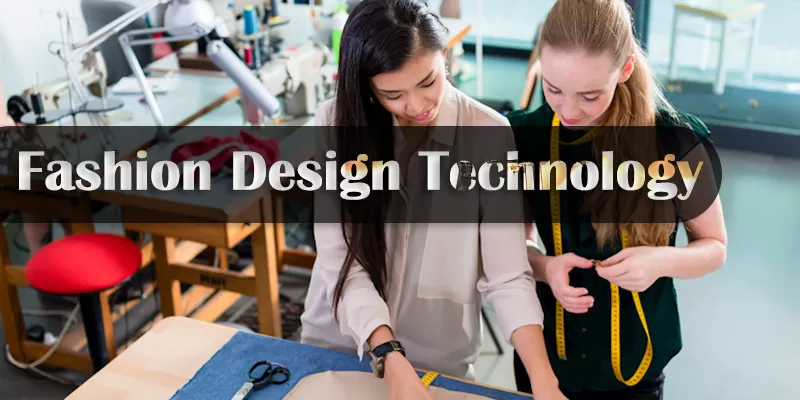
Fashion Design Technology is an NCVT-approved ITI trade that focuses on equipping students with the professional skills and creative abilities required in the dynamic world of fashion. It is a job-oriented course suitable for both government and private sector jobs, and also opens opportunities for self-employment. The course curriculum is carefully designed to meet the industrial requirements of both Indian and International fashion industries.
Students are trained to develop, design, and create patterns for new styles of men's, women's, and children's garments. They learn to study existing trends, develop innovative designs, create full-scale patterns, and produce sample garments. Garments are then tested for fit and finish on models, with adjustments made to patterns as necessary to perfect the design.
Career Scope & Opportunities
The field of Fashion Design & Technology offers a wide range of career opportunities, including:
✔️ Self-Employment – Start your own fashion label or boutique
✔️ Contractual Work – Freelance fashion designer or consultant
✔️ Industrial Employment – Work with apparel brands, garment export houses, or textile industries
Upon successful completion of the course, candidates will be gainfully employed in various sectors for the following roles:
✅ Fashion Designer
✅ Pattern Maker
✅ Apparel Production Assistant
✅ Garment Quality Controller
✅ Sampling Coordinator
✅ Fashion Illustrator
✅ Fashion Merchandiser
✅ Tailor & Dressmaker
✅ Entrepreneur (Boutique or Garment Unit)
Why Choose ITI Fashion Design Technology?
✔️ Comprehensive Training in design, pattern making, garment construction, and fashion illustration
✔️ Hands-on Experience in stitching, draping, and garment fitting
✔️ Exposure to Latest Trends in the fashion and textile industries
✔️ Industry-Relevant Curriculum aligned with modern production and quality standards
✔️ Entrepreneurial Skills Development for those seeking to start their own business
✔️ High Demand for skilled professionals in fashion houses, apparel export companies, and retail brands
Skills You Will Gain
🎨 Fashion Illustration & Design
✂️ Pattern Drafting & Garment Construction
🧵 Cutting, Stitching, and Finishing
🧶 Fabric Knowledge & Textile Science
📝 Costing & Quality Control
💻 Computer-Aided Design (CAD) (if offered in syllabus)
👗 Trend Forecasting & Portfolio Development
📐 Measurements & Fitting Techniques
Eligibility Criteria
✔️ Minimum Qualification: 10th Pass (Secondary School Certificate)
✔️ Duration: 1 Year (Full-Time Course)
✔️ Certification: NCVT Approved
Conclusion
The Fashion Design Technology trade provides an ideal platform for creative minds to develop professional expertise in fashion designing and garment technology. Whether you aspire to launch your fashion label or join reputed fashion houses, this course will help you shape your career in the ever-evolving world of fashion.
Key Learning Outcomes of Fashion Design Technology
During the Fashion Design Technology course, students will develop both creative and technical skills essential for the fashion industry. The course covers a comprehensive range of topics designed to build foundational and advanced knowledge in fashion design.
Core Skills and Competencies:
- ✅ Understand and Illustrate the Importance of Fashion Designing
- Grasp the role and impact of fashion design in the apparel industry and its relevance to culture and society.
- ✅ Sketch Fashion Croquis (Female) and Design Garments
- Create fashion croquis (fashion figures) and design garments using the elements and principles of design, incorporating appropriate colour schemes.
- ✅ Draping and Fabric Rendering
- Develop skills in fabric draping and illustrate fabric rendering techniques, including texture drawing for visual representation.
- ✅ Surface Ornamentation Techniques
- Apply various surface ornamentation methods such as embroidery, dyeing, and printing to enhance fabric design.
- ✅ Perform Basic Stitches, Seams, and Edge Finishes
- Master essential sewing techniques, including basic stitches, seams, and edge finishes, using manual methods and sewing machines.
- ✅ Identify Different Fibres and Fabrics
- Learn to identify fibres and fabrics, understand their properties, and differentiate between weaves and knits.
- ✅ Garment and Accessories Design in CorelDRAW
- Utilize CorelDRAW software for designing garments and accessories, leveraging various tools and commands for digital fashion illustration.
- ✅ Create Bodice Block Sets and Patterns
- Draft and construct bodice block sets, develop patterns, and construct samples showcasing different design details.
- ✅ Apply Garment Details in Fashion Illustrations
- Incorporate intricate garment details into fashion illustrations for a professional presentation of designs.
- ✅ Illustrate Male and Female Wear on Croquis
- Draw and illustrate both male and female garments on croquis, and develop designer wear concepts based on draping techniques or fashion sketches as per current trends and styles.
- ✅ Analyse Human Anatomy Using the Eight-Head Theory
- Understand human body proportions, study the eight-head theory, and analyze different body contours for better garment fit and design.
- ✅ Ensure Quality in Garment Production
- Gain insights into quality control procedures and ensure production quality standards are met in garment manufacturing.
- ✅ Analyse Fashion Merchandising & Career Prospects
- Study fashion merchandising, understand the scope of the fashion industry, and explore career opportunities in fashion design, production, and retail.
- ✅ Freehand Designing of Fashion Accessories
- Practice freehand designing of fashion accessories like bags, shoes, jewelry, etc., aligned with current fashion trends.
- ✅ Revision, Project Work, and Examination
- Engage in project work, revision, and practical examinations to assess the understanding and application of skills learned during the course.
Conclusion:
This curriculum prepares students to be proficient in fashion design, from conceptualization to execution. Graduates can pursue careers in fashion houses, boutiques, garment export companies, or even launch their own brands.
